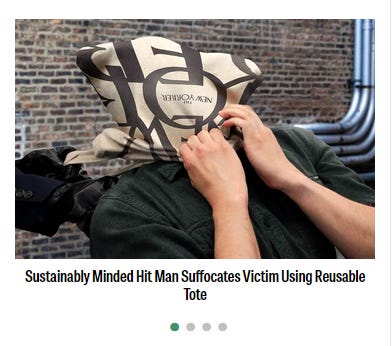I attended “Endlesss Data Forests and the Solar Web,” a talk hosted by Rhizome on alternatives to carbon-dependency in web-based projects, and how the institution has been exploring its own relationship to extraction. I came because I wanted to hear Solar Protocol (Tega Brain, Alex Nathanson, and Benedetta Piantella) discuss their solar-powered server network, which has been up and running since the early 2020s. But the topic I’m still thinking about arose during the Q&A. Charlotte Kent brought up that several art fairs have signed onto an agreement to massively reduce their carbon-dioxide expenditures by 2030. Depending on whether or not you’re an eyeroll person, a mouth-agape person, or a verbal “Ick”-er, any one of those reactions would have been appropriate.
As much as this news sounded like the beginning of an Onion headline, I looked into it, and, yes, announced during Climate Week, over a dozen art fairs signed up to be part of the Gallery Climate Coalition (GCC), a nonprofit out of the UK that offers a mix of environmental impact consulting and self-reporting tools to its member-based network. The idea is that members commit to reporting on their carbon expenditures on a yearly basis, in hopes of reaching goals to reduce their carbon footprint by more than 50% by 2030.
Initially, I was dubious about how the art fair system, largely predicated on the wealth of clients flying and shipping work all-year long, can help. At this point, it’s so late in the game: ten years ago, I remember asking galleries and fairs how they were dealing with recycling. To paraphrase one response I heard was “We try to use paper plates at openings?”, and there was definitely the hesitation at the end with that question mark.
In brief, here’s the good and the bad as far as I can tell about the Gallery Climate Coalition and what it might mean for art fairs. Despite good intentions, any form of climate-consulting needs to be scrutinized because we’ve seen a number of solutions proposed over the years that continue to make more problems. Recycling isn’t perfect, net zero is a scam, and somehow, the U.S. is now producing “more crude oil than any country, ever.”
The Good and Good-ish
I was thrilled to read that the Gallery Climate Coalition advises against any quick fixes to get to “net zero” through buying carbon offsets. The absurdity of being able to continue extractive practices by putting some of the monetary gains towards “good” actions has been criticized, is being criticized, and will hopefully continue to be criticized until it’s seen for what it is: a diversion, not a tactic.
They make it look so easy! I’m not sure exactly which metrics they’re using, but the GCC website has an easy-on-the-eyes carbon measurement tool that allows galleries and fairs to calculate their own footprint based on quantifying actions like the number of flights staff take per year and the annual weight of freight shipping.
The Unclear and/or Bad
Self-reported numbers: From alcohol intake to carbon expenditures, reporting on one’s own unappealing behaviors has been proven time and again to lead to gentle fibbing.
Lack of accountability: As proven by the Paris Agreement, it sure can be easy to get out of a non-binding legal agreement. Some of the questions posed in their materials seem to bravely fly in the face of the gallery industry as a whole, asking whether companies can reimagine their goals for success outside of a model focused on expanding profits. However, these questions lack teeth given that there’s no mechanism for regulation.
Another issue with the carbon calculator: Recycling doesn’t factor into these plans. It seems like anything recycled doesn’t count, which is also a way of neturalizing the impact of plastics and other materials, regardless of the extraction that happens along the way and the general lack of knowledge about what happens to recycled goods after they’re put in a recycling bin.
Another one: The carbon calculator doesn’t factor into investments by individual galleries or fairs in companies that are known pollutors.
Okay, the last carbon calculation issue: There’s no requirement for listing one’s digital footprint.
Speaking of which, I wonder which members have signed on who will do anything about their membership. Looking over the current list, I’m not sure of the difference between “active” and “non-active” membership.
None of these band-aids are going to solve the issues that have led to the continued growth and expansion of art fairs not just to new cities but to new cities multiple times per year. I understand the impetus to have a wide membership to shift the artworld hive mind, I really want to increase climate awareness, but I don’t know if the magic words are going to be Pretty please, try not to be so capitalist?




